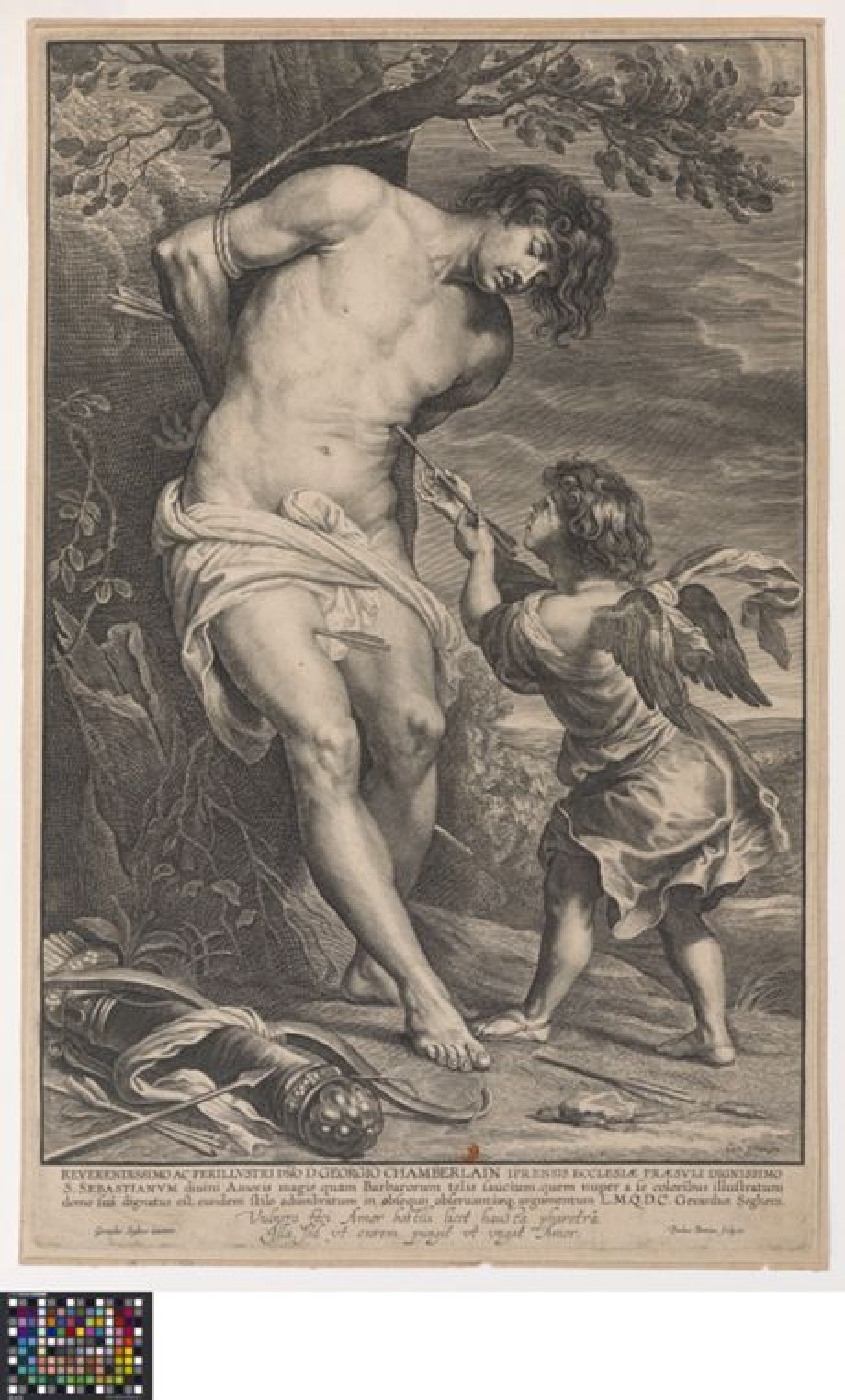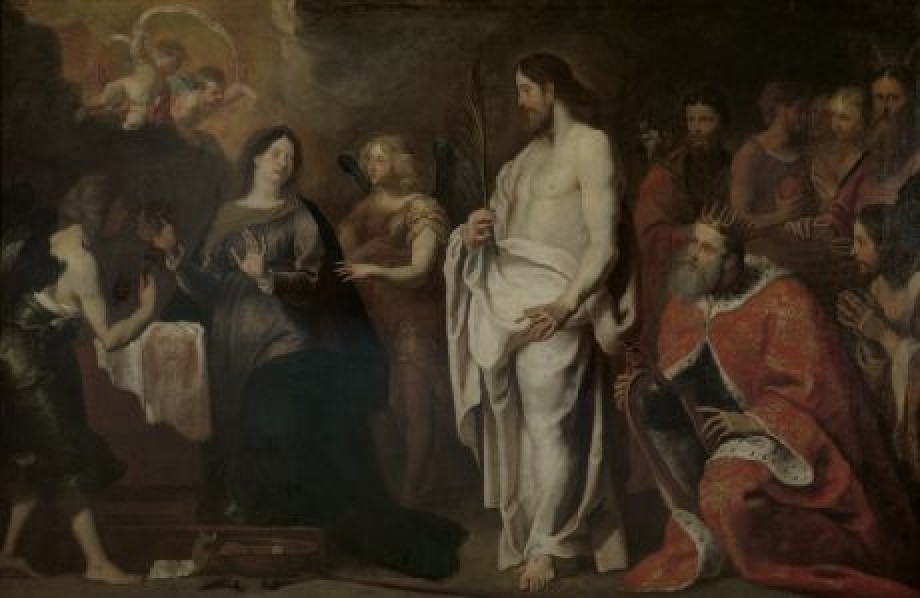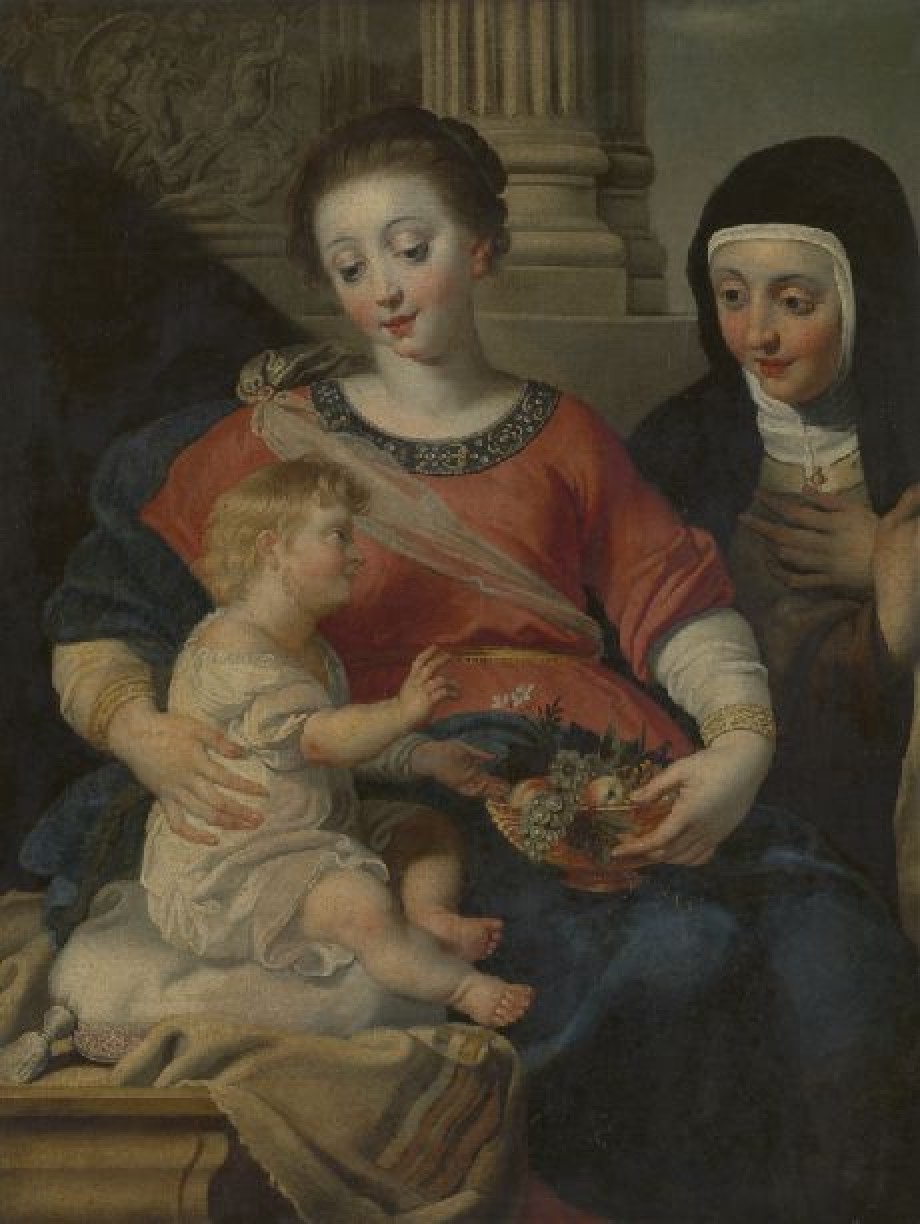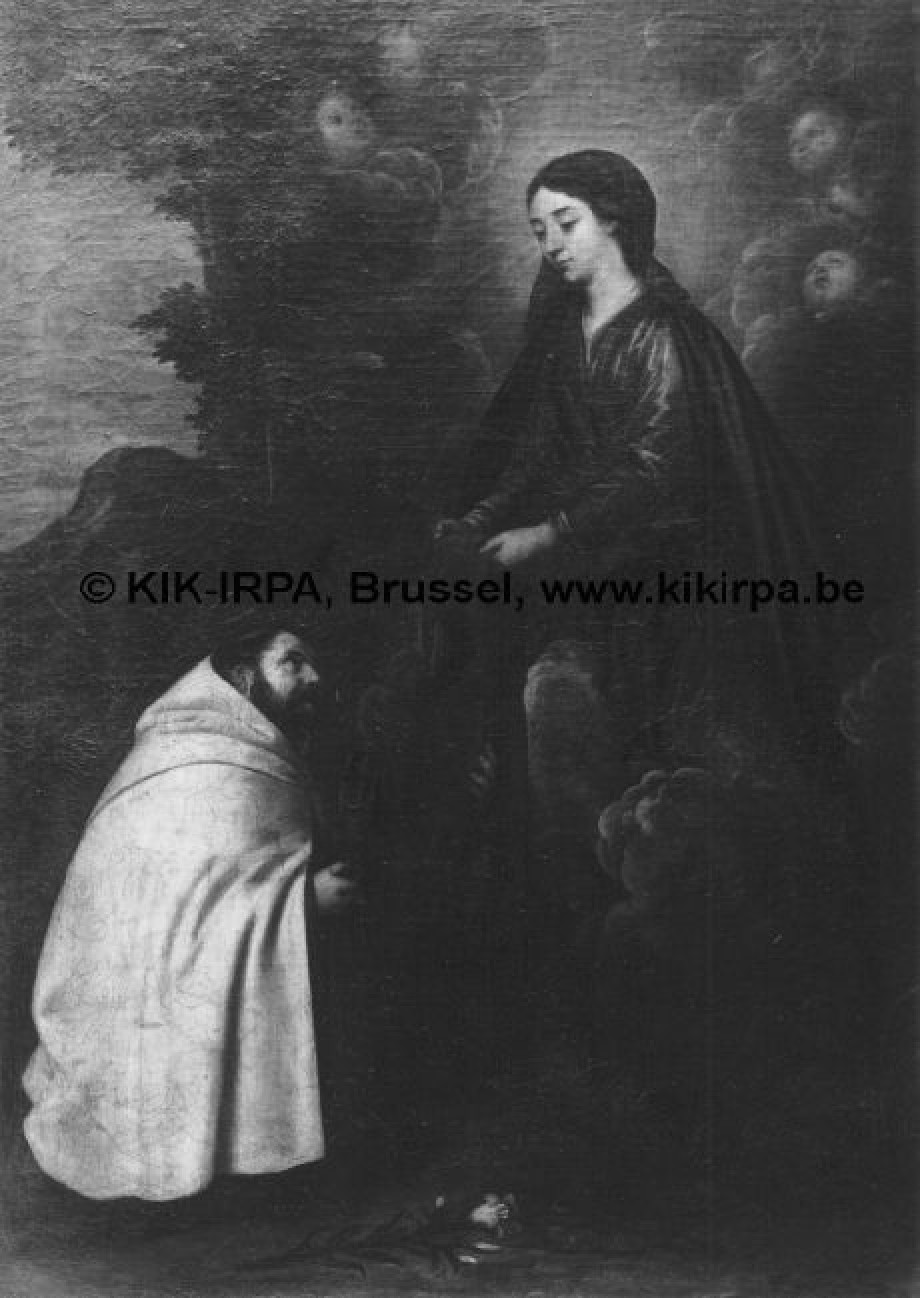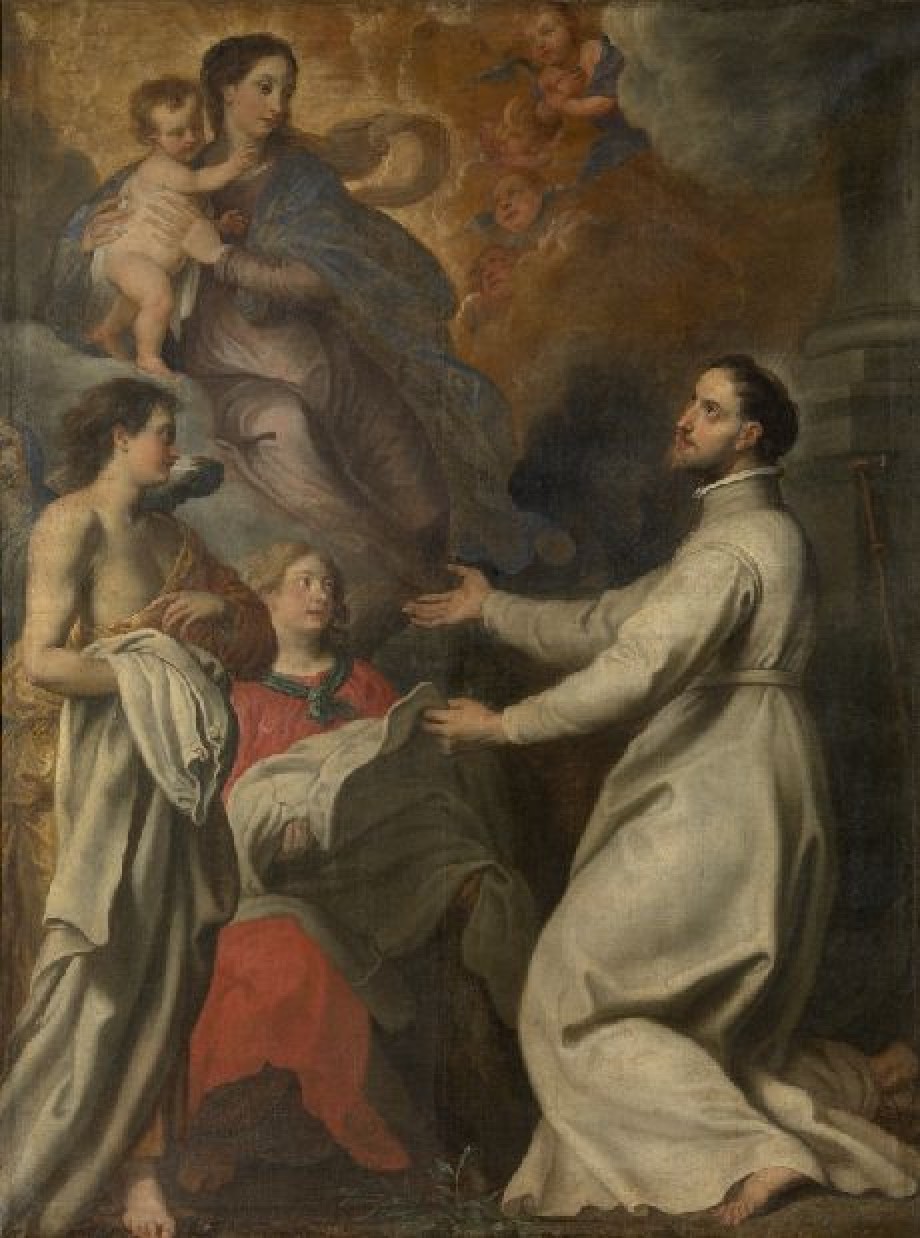
Gerard Seghers
More about Gerard Seghers
Gerard Seghers is an Antwerp painter, art collector and dealer. For the most part he produces monumental genre pieces and large religious and allegorical pieces in the genre style with a characteristic landscape format. Seghers works in Italy and Spain. From about 1620, his home base is again Antwerp. Seghers completes altarpieces in this period for many churches in the Southern Netherlands.
According to 17th-century sources, Seghers is a student of Abraham Janssen (ca. 1575-1632). The early work of Seghers shows stylistic connections with the oeuvre of Janssen. Another source (Houbraken) cites him as a student of Hendrick van Balen I (1573-1632).
On the stylistic and thematic level, Seghers is strongly related to the Caravaggio movement, most notably with the work of Bartolomeo Manfredi (ca. 1582-1622), a student of Caravaggio (1571-1610). In contrast to Caravaggio, his adepts, as well as Seghers, choose for a more idealised treatment. A dramatically contrasting chiaroscuro, the close-up technique and an exaggerated expression are characteristics of his painting style. Seghers often uses figures that as repoussoirs obscure the contrasting light sources (often candlelight).
After 1630, the light in his work becomes more evenly spread out and the dark background becomes exchanged with architectural motifs, clouds and landscape elements. The realistic facial expressions become more Classicist by nature. His art in general becomes more theatrical with more variants of colour, in conformity to the developments that were being introduced by Rubens at the moment.
March 1591
Gerard Seghers is born in Antwerp.
1603
Seghers becomes a student.
1608
Seghers receives his Free Mastership in the Antwerp St. Lucas guild.
1611
The artist becomes a member of the Sodaliteit der Bejaarde Jongmans.
Before 15 February 1613
The painter travels to Italy. It is supposed that there he does work for the Antwerp art merchant Goetkint. There, Seghers does the necessary experience as a painter and would have made copies after famous Italian paintings.
Among other places, Gerard Seghers is present in Naples and Rome. In Rome he encounters the Caravaggians. One of them, Bartolomeo Manfredi (ca. 1582-1622), is an influence on his work. But, he also appears to have made acquaintance with the Caravaggians from the Netherlands. This includes artists such as Gerard van Honthorst (1592-1656), Dirck van Baburen (1594/95-1624) and Jan Janssen (1590-ca. 1650) and perhaps also Hendrik ter Brugghen (1588-1629) and Theodoor Rombouts (1597-1637). A painting from that time which appears that is influenced by Caravaggio, for example, is Judith with the head of Holofernes (Galleria Nazionale d'Arte Antica, Rome).
After his journey in Italy, Seghers travels to Spain and there according to his own report works for Philip III, King of Spain.
Circa 1620
Around 1620, Seghers returns to Antwerp. He shall remain working there until his death.
28 November 1621
The artist marries Catharina Wouters. The couple has eleven children. Wouters is the daughter of a wealthy merchant. By means of this, Gerard Seghers effects a social promotion.
1624
For the Jesuits of the Saint Charles Borromeo's Church in Antwerp, Seghers produces The Raising of the Cross.
1624-27
Seghers does not pay his guild dues, which is taken to mean that it is because he is not present in Antwerp. It is suspected that he is visiting the painter Gerard van Honthorst in Utrecht. Both men know each other in all likelihood from their period in Rome. There exist stylistic connections between both oeuvres.
1630
For the Our Blessed Lady Church in Bruges, Seghers paints The Adoration of the Magi. Rubens' version from 1624 (Notre Dame, Calais) serves as a model.
Around 1630
Seghers completes St. Theresia of Avila in Ecstasy (KMSKA, Antwerp) and The Mocking of Christ (St. Michiels' Church, Ghent).
Circa 1631
The artist sets his eye on a luxurious house on the Meir in Antwerp. For the wealthy artist it is going very well. It is a fact that also is apparent from the large number of students that Seghers has.
1635
Seghers is one of the artists who are collaborating on the decorations for the Glorious Entrance of Cardinal-infant Ferdinand (1609-1641) (Pompa Introitus Ferdinandi) in Antwerp, after the designs of Rubens.
1636-38
Along with other artists, Seghers works on the mythological decorations (after oil sketches by Rubens) of the hunting pavilion Torre de la Prada of Philips IV, in the vicinity of Madrid.
1645
Seghers becomes dean of the Antwerp St. Lucas guild.
1649
The Adoration of the Shepherds comes about in this year (Museum Plantin-Moretus/Print Room).
18 March 1651
Gerard Seghers dies and is buried in the Saint Michaels' Church in Antwerp.
Text: Matthias Depoorter
